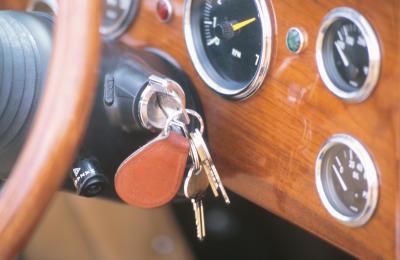
Automobiles utilize a starter motor to start the engine. The main components are the starter switch, the solenoid and the starter motor. Some cars also have a starter solenoid relay.
The starter motor actually turns the car's motor to start it. The electrical contacts to operate the starter motor are in the solenoid.
Turning the key operates the solenoid, a motor that moves the gears from the starter motor to mesh with gears on the flywheel to turn the engine.
In some vehicles, turning the key to the start position operates a relay that in turn operates the solenoid. This is called the starter solenoid relay.
The starter solenoid relay reduces the amount of current that runs through the starter switch. This prevents arcing and prolongs the life of the starter switch.
The wiring to the starter solenoid relay also runs through a switch that will not allow the car to start if it is in park or neutral. With manual transmissions, this switch connects to the clutch pedal.